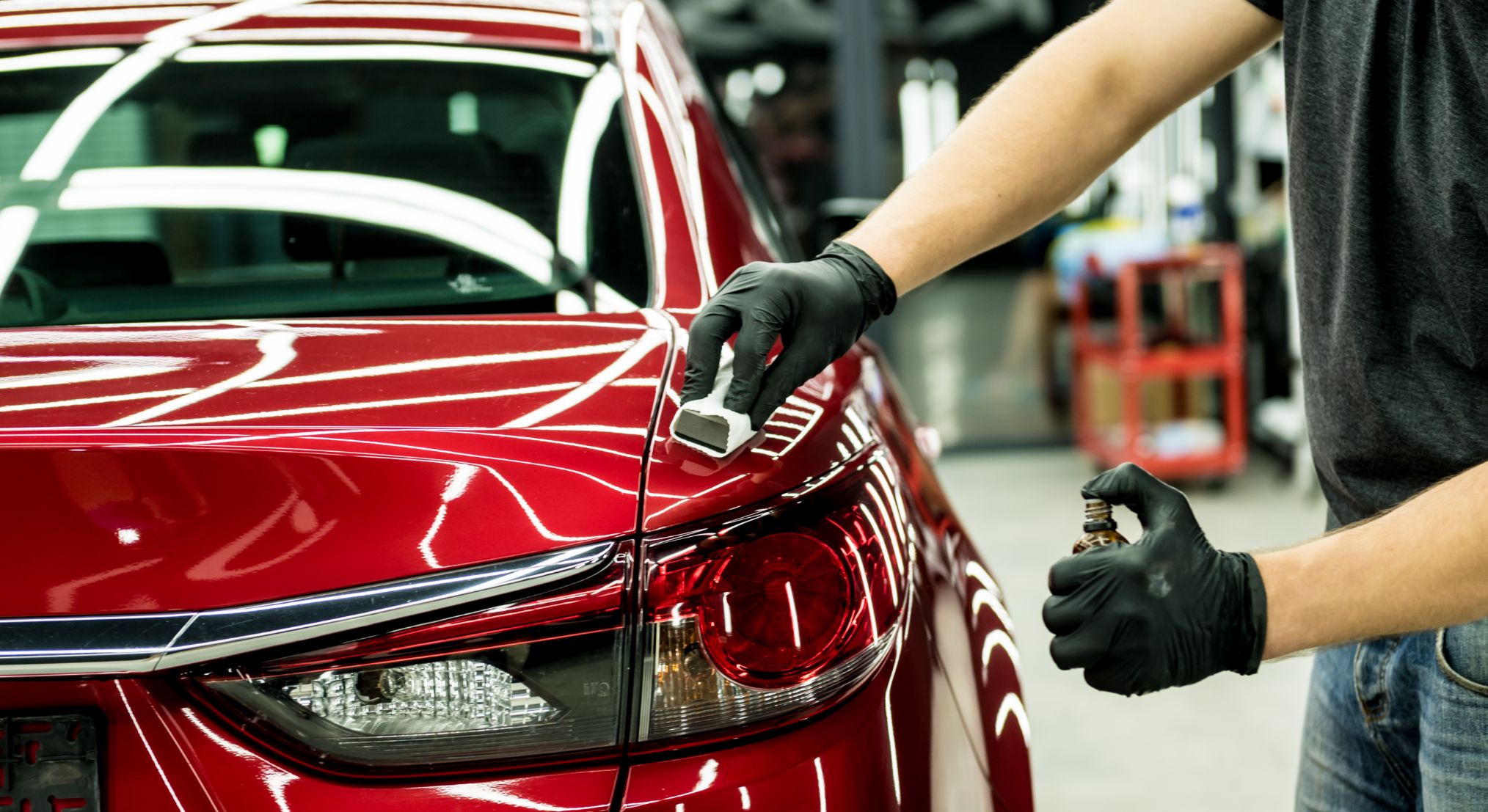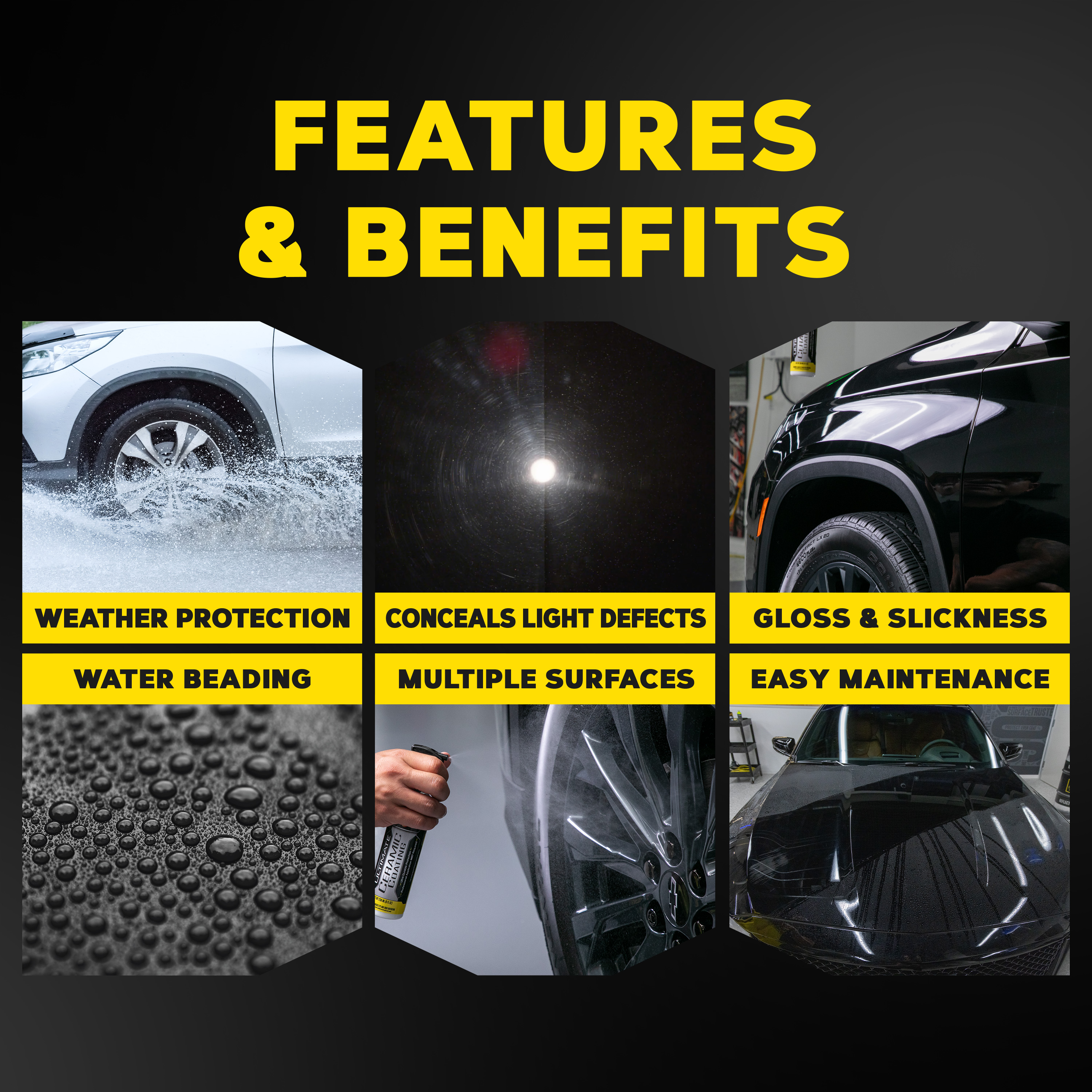Top Benefits of Ceramic Coating for Long-Lasting Car Care
Top Benefits of Ceramic Coating for Long-Lasting Car Care
Blog Article
Ceramic Layer vs. Traditional Wax: Which Gives Much Better Long-Term Security?
The discussion between ceramic finishings and standard wax for car defense has actually garnered significant interest amongst automobile fanatics and specialists alike. While both offer the purpose of safeguarding paint, their differences in sturdiness, application, and long-lasting maintenance expenses may influence a consumer's choice. Ceramic coatings flaunt premium durability and resistance to ecological elements, yet the intricacy of their application questions regarding accessibility and functionality. As we explore these contrasting options, it ends up being important to take into consideration not only the instant advantages yet likewise the ramifications for vehicle care in time.
Introduction of Ceramic Coating
Ceramic finish has actually gained substantial popularity among automotive enthusiasts and detailers alike due to its sophisticated protective top qualities. This ingenious modern technology is developed to create a long lasting, hydrophobic shield over an automobile's paint surface area, substantially improving its resistance to ecological pollutants such as dirt, UV rays, and chemical spots. Unlike conventional wax, which provides a momentary layer of security, ceramic coverings bond at a molecular level with the paint, supplying resilient durability-- often expanding beyond 2 years with appropriate maintenance.
The application procedure includes meticulous prep work of the automobile's surface, including cleansing and polishing to ensure optimal attachment. As soon as used, the covering treatments to create a robust layer that not only adds deepness and gloss to the paint yet likewise streamlines upkeep. With its hydrophobic homes, ceramic layer allows water and dirt to slide off more easily, minimizing the regularity of cleans and minimizing the risk of swirl marks.
In addition, ceramic finishings are offered in different formulas, permitting customers to select products tailored to their certain demands and preferences. On the whole, ceramic covering stands for a significant development in paint protection modern technology, providing superior performance compared to standard options.
Overview of Typical Wax
Traditionally considered a staple in auto care, wax functions as a preferred selection for those looking for a straightforward technique to improve and protect their automobile's paint - ceramic coating. Automotive wax typically consists of all-natural active ingredients, such as carnauba, or artificial compounds, designed to create a protective layer externally of the paint. This layer not only boosts the car's gloss and shine but also supplies a barrier against ecological contaminants
The application of wax is normally user-friendly, making it accessible for both experts and DIY lovers. As soon as applied, wax requires a healing duration, after which it sets to develop a safety shell.
Nevertheless, while wax works for improving the visual appeal of an automobile, it is essential to keep in mind that the protection it supplies may demand a lot more regular reapplication compared to different items, such as ceramic layers. On the whole, typical wax stays a favored choice for those prioritizing convenience of use and immediate visual improvement.
Resilience and Durability Contrast
While both ceramic finishes and typical wax offer protective advantages for automotive paint, their durability and longevity differ considerably. Typical wax, commonly made from all-natural carnauba or synthetic polymers, typically supplies a safety layer that lasts around 3 to 6 months. This reasonably brief lifespan requires routine reapplication to keep optimum security.
On the other hand, ceramic layers are engineered from innovative nanotechnology, developing a covalent bond with the paint surface area. This results in a robust, hydrophobic layer that can withstand for 2 to five years, relying on the item and ecological conditions. The exceptional resilience of ceramic coverings is credited to their chemical framework, which uses enhanced resistance to scratches, UV rays, and oxidation.

Protection Versus Environmental Factors
Protecting a vehicle's paint from ecological variables is crucial for keeping its appearance and worth over time. Autos are regularly subjected to a variety of components, consisting of UV rays, bird droppings, tree sap, acid rain, and roadway gunk, all of which can jeopardize the stability of the paintwork.
Ceramic finishes provide a robust defense against these environmental assailants. Unlike typical wax, which can degrade rapidly under UV exposure, ceramic coatings develop a long lasting, hydrophobic layer that stands up to the damaging results of sunlight and toxic wastes. This innovative technology develops a chemical bond with the click here for info vehicle's surface area, using premium protection that lasts for many years, also in harsh problems.
Traditional wax, while much easier to use, usually calls for constant reapplication and provides limited resistance to pollutants and UV rays. With time, it can damage down, leaving the paint at risk to scrapes and oxidation. In contrast, ceramic finishings preserve their protective high qualities much longer, significantly decreasing the threat of paint damages and ensuring that the automobile retains its aesthetic allure. Consequently, ceramic layers are significantly recognized as the remarkable option for long-lasting security against environmental factors.
Application and Upkeep Differences
The techniques of application and succeeding upkeep for ceramic finishings and standard wax differ considerably, influencing the total individual experience and effectiveness of each item. Ceramic coatings call for an even more complex application procedure, usually involving surface area preparation that includes cleaning, decontaminating, and brightening the like it car. As soon as the surface area prepares, the ceramic covering is used in a regulated atmosphere, typically needing professional knowledge to make sure appropriate treating and bonding to the paint.

While both items boost vehicle appearance, the longer-lasting defense offered by ceramic coatings may justify their first financial investment, in spite of the even more requiring application procedure. Alternatively, conventional wax stays a preferred selection for those looking for a simpler, albeit short-term, solution.

Verdict
In conclusion, ceramic coatings show significant advantages over traditional wax in terms of sturdiness and ecological security. With a life-span expanding two to five years and remarkable resistance to UV rays, dust, and chemical stains, ceramic coverings use a more effective remedy for long-term lorry maintenance. The application procedure may require expert know-how, the resulting price savings and minimized frequency of reapplication highlight the worth of ceramic coverings for those seeking ideal lorry security.
The argument between ceramic coatings and traditional wax for car protection has actually amassed substantial interest among vehicle enthusiasts and specialists alike. Unlike conventional wax, which offers a temporary layer of defense, ceramic coatings bond at a molecular degree with the paint, using durable toughness-- commonly prolonging past two years with proper upkeep.
While both ceramic coatings and traditional wax offer safety advantages for vehicle paint, their sturdiness and longevity differ dramatically. For cars and truck enthusiasts looking for lasting security, ceramic layers provide a compelling advantage over traditional wax products.
In conclusion, ceramic finishings show significant advantages over traditional wax in terms of longevity and environmental security.
Report this page